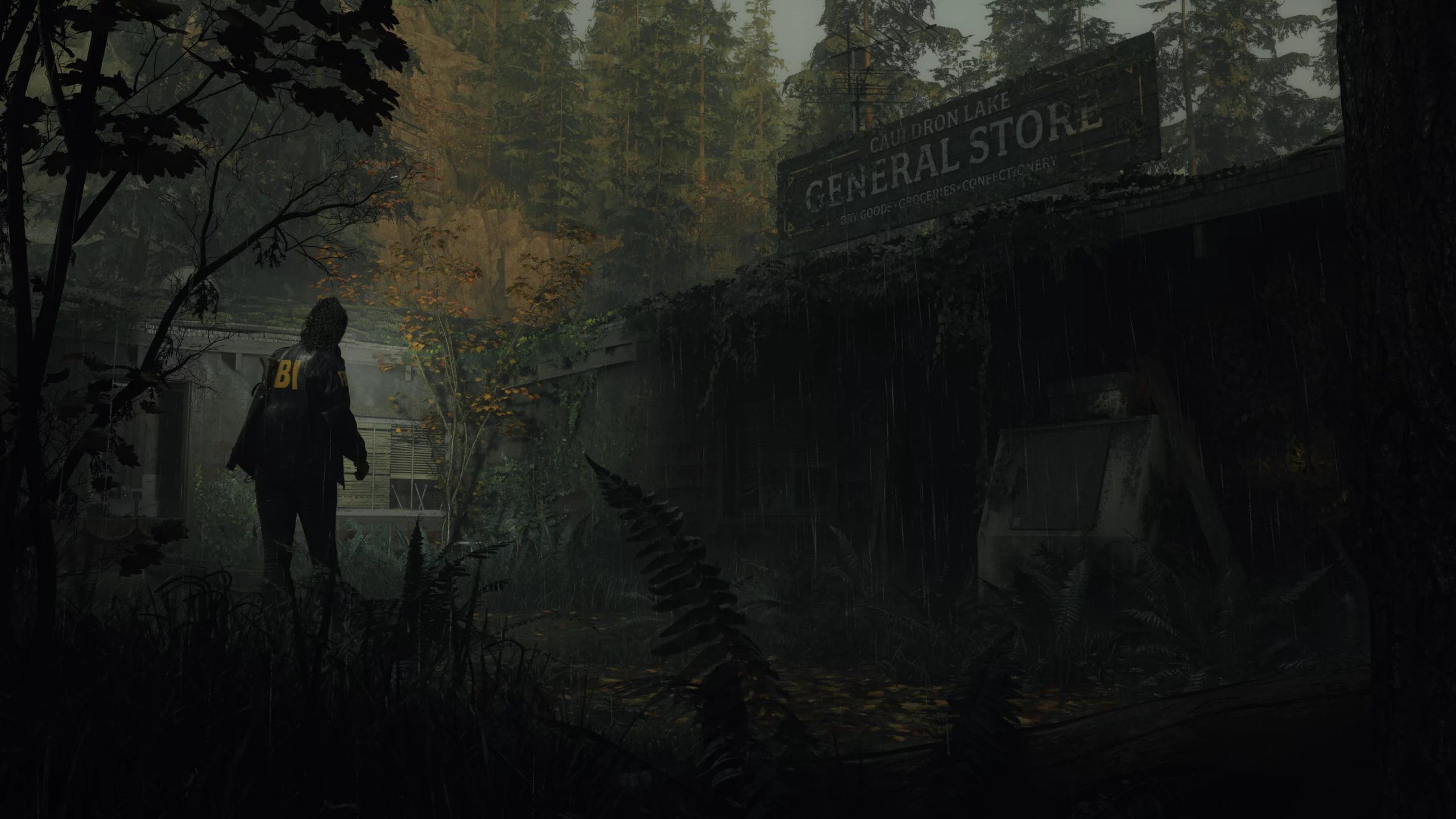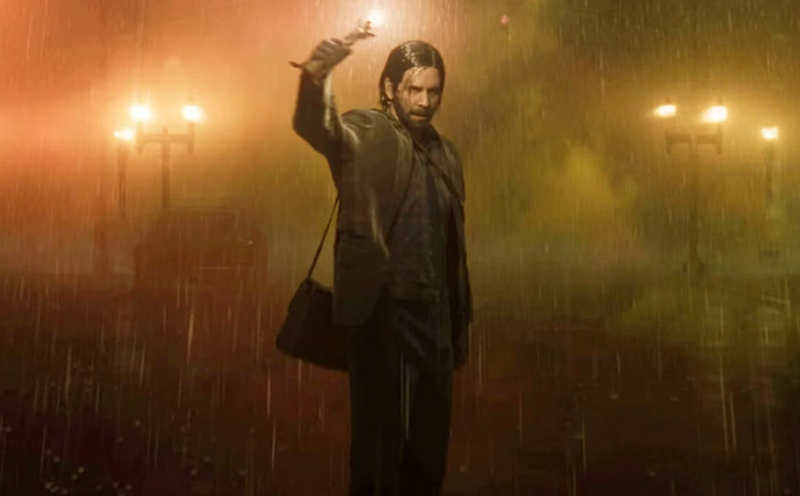The subtle horror of Alan Wake
See how Alan Wake crafts a delicate and slow-building horror experience.

When the average person thinks of horror media, a few common ideas come to mind. The consensus paints horror as based simply around shocking the viewer with loud noises or rapid visuals, usually with varying degrees of blood and gore. But many horror titles, such as Alan Wake, take a different approach.
Alan Wake is undoubtedly a horror game, but it tackles horror far less overtly. Rather than relying on jumpscares and nightmarish visuals, the game uses a more mysterious and sophisticated approach. The darkness that inhabits the town of Bright Falls is terrifying in its subtleties.
It speaks to a wider sub-genre of horror games, ones not necessarily bound by shock and awe. The psychological horror genre terrifies the mind and your mental state instead of scaring you with the threat of immediate peril. In the world of Alan Wake, a life afflicted by the terrors roaming around this world is a fate much worse than death.
As Alan Wake 2 takes the mantle this October, we’re looking back on how Alan Wake incorporated horror. Through this examination, we’ll also discuss how horror games can learn from the series’ example. And by looking at the current trailers and gameplay information, we’ll see how the sequel is evolving the game further.
Debunking the horror game archetype

First, it’s imperative to define exactly what a horror game is by nature. Horror is a far more subjective descriptor than other genres like action and science fiction. What terrifies one viewer might have no effect, or possibly even calm, another.
So how do we assign the horror label without creating confusion? You might be okay calling a jumpscare-y and/or gore-y horror game as a “true horror” game. Yet this label feels too elitist for common parlance, and makes other games seem less worthy of consideration.
Although applying the “survival horror” moniker to these games might be controversial, there are enough common threads for it to make sense. In these types of games, the enemies have far more power than you and you need to escape rather than take them down. This contrasts with “action horror” which gives you plenty of firepower and puts you up against terrifying enemies.
Then there are the horror games that get to something deeper. They posit that there’s nothing scarier than the human mind, that horror lies within and terrifies you by forcing you to confront your inner demons.
That’s where Alan Wake comes in.
Alan Wake and horror as an aesthetic

Alan Wake was far from the first game to use horror as an aesthetic rather than just scaring the player. Yet it’s emblematic of Remedy Entertainment’s knowledge of the human psyche and how humans would react when put in dangerous situations.
Their aim was to bring horror games into a different dimension, one inspired by classic horror literature and especially the works of Stephen King. That influence is clear right from the get-go; I mean, the first line of the script is a Stephen King namedrop. Yet it’s not so reliant on an understanding of King’s work that you’ll feel lost without any prior knowledge.
While Alan Wake occasionally dips into the more brutal lines of horror, it aims to take its time and let the horror creep up from within you. It is a slow, brooding, and atmospheric game, where the horror influences are plain to see but subtly sink their hooks into you over time.
Embrace the darkness

If there’s one word you can choose to describe Alan Wake, it would be “darkness.” Not just because the game itself is tremendously dark — as in, it’s literally brimming with shadows. With a heavy blue, black, and grey color palette, the environments seem almost drenched in black mist and terrain.
But that darkness also infects the town and its inhabitants. The main villain is an entity living at the bottom of Cauldron Lake, a black and mirky sea of despair. This darkness pulls in those attracted to its power, and corrupts them to reveal the evil within.
As its titular protagonist is a horror and mystery writer (and a successful one, at that), it’s fair to assume Remedy wanted to get more creative with its approach to horror. Alan Wake believes that good and evil reside inside everybody, represented in his stories (and the game) by the monsters roaming the woods.
That’s why the enemies appear so human-like. They’re essentially human beings corrupted by the darkness, having given in to their evil urges. It’s fighting against that inner gloom that lets our heroes elevate above the rest.
The horror of Alan Wake 2

The interesting thing about Alan Wake is how the series is evolving from its humbler horror roots. While the original game takes a more subtle approach to horror, it was fairly action-based. Resources are plentiful enough and Alan is more than capable of dealing with threats.
In Alan Wake 2, however, the horror is far more dramatic and far deadlier. Remedy is developing a full-on survival horror experience that ramps the horror up to 11. Taking control of Alan Wake once again, you’re trapped in the Dark Place and desperately seeking a way out. Incorporating the trauma from inside Alan’s mind, his prison has twisted itself into a horrifying combination of his own psyche and his last known location in the real world.
Speaking of the real world, that’s where we meet our other protagonist Saga Anderson. She’s an FBI agent tasked with investigating a cult that’s been performing ritualistic murders in Bright Falls. Along the way, she encounters several horrific sights and has to defend herself against the horrors emanating from the forest.
The two stories intertwine as Alan Wake writes a novel to escape from the pits of the Dark Place. His writing influences events in the real world, and Saga is particularly affected. I think dealing with reality-shifting events would scare the hell out of anybody, to be fair.
Experience the horror all over again

Alan Wake 2 is developed by Remedy Entertainment and published by Epic Games Publishing. It will launch for the PlayStation 5, Xbox Series X/S, and PC via Epic Games Store on October 17, 2023. As of now, the game will be a digital exclusive. There are no plans for a physical disc version at this time.
There will be a standard edition of the game and a deluxe version. The deluxe version includes an expansion pass that features the Night Springs and Lake House story expansions. You also get the Nordic Shotgun Skin, Crimson Windbreaker, and Lantern for Saga, and the Parliament Shotgun Skin and Celebrity Suit for Alan. If you pre-order the game, you’ll gain access to the Ornate Revolver Skin for Alan and Survival Resources Pack for Saga.
The standard edition will cost $49.99 USD on PC, and $59.99 USD on consoles. The deluxe edition costs $69.99 USD on PC and $79.99 on consoles.
What are you most excited for in Alan Wake 2? Let us know!

